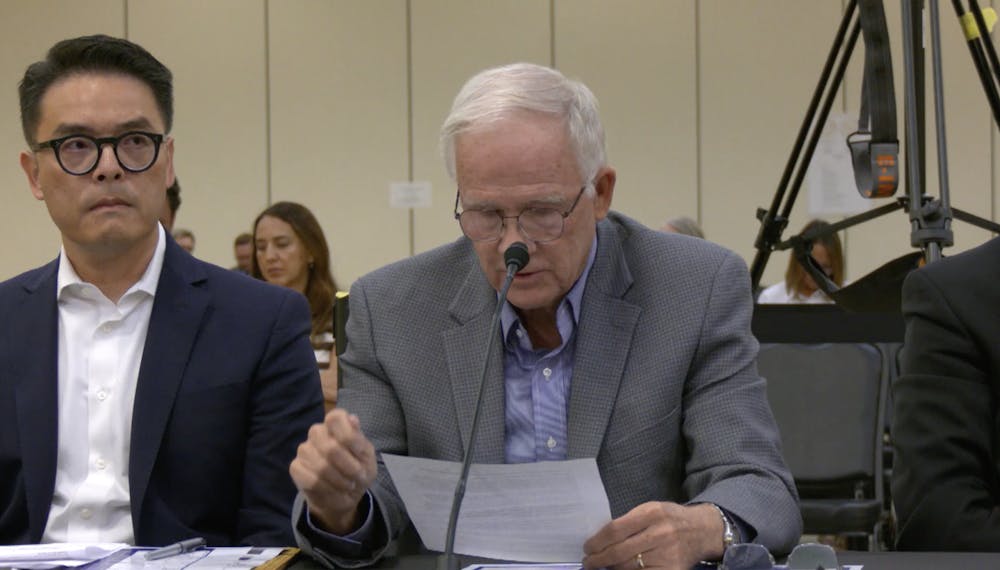A Rice disaster prediction model discussed at hearing on deadly Central Texas floods

The House and Senate Select Committees on Disaster Preparedness and Flooding held a hearing on July 31 in Kerrville to address the deadly July 4 flooding in Central Texas. The flooding along the banks of the Guadalupe River killed 108 people, including 37 children. In the charged hearing, Texas lawmakers and flood survivors criticized the local response to the disaster.
After a panel of meteorologists spoke on areas of improvement in Texas’s flash flood detection methods, Rice department of Civil and Environmental Engineering professor Phil Bedient spoke on improving prediction for watersheds in the Hill County area. Bedient is the founder of the Severe Storm, Prediction, Education and Evacuation from Disasters Center.
“In the aftermath, the mass of this devastating storm in 2025, it's clear that the need for reliable, real time flood warning systems has never been more urgent,” Bedient said during the 13 hour long hearing.
During his speech, Bedient described the novel prediction model that he has been developing with his team at SSPEED along with his colleague Nick Fang from The University of Texas at Arlington.
The model they developed currently serves downtown Houston and the broader Houston area through providing fast, real-time predictions. Bedient said this system can be applied to rural areas, such as those near the Guadalupe River in the Hill Country.
Is there anything we could add here that has to do with the future of this research at Rice? I think a stronger Rice connection might help the story a bit.
During the hearing, Bedient said that the prediction system works by tracking real-time rainfall data and applying that data to local watersheds, giving periodic updates on flash flooding risk.
Fang discussed the importance of both the funding and maintenance of these systems to ensure that this system works optimally. He also emphasized the much needed funding for research and development to continue the betterment of these systems.
The meteorologists at the panel emphasized the importance for increasing the amount of water detection gauges within the area. Through implementing these new detection and prediction systems, they said, residents of Hill County would be able to get warning messages sooner and then seek shelter on higher ground.
“The tools exist, we just need to put them in place,” Bedient said.
More from The Rice Thresher

NetID replaced by WhooRU
The Office of Information Technology launched WhooRU.rice.edu to replace MyNetID.rice.edu, the current online account management system, on August 1.

NetID replaced by WhooRU
The Office of Information Technology launched WhooRU.rice.edu to replace MyNetID.rice.edu, the current online account management system, on August 1.

On-campus meal plan changed to unlimited swipes, with 10 guest swipes per semester
Housing and Dining recently revealed a new dining plan for the upcoming semester. The required on-campus meal plan now has unlimited meal swipes, compared to 375 meal swipes last year. H&D said the previous on-campus meal plan was for students who intended to eat on campus 15 to 25 meals a week.

Please note All comments are eligible for publication by The Rice Thresher.